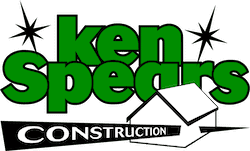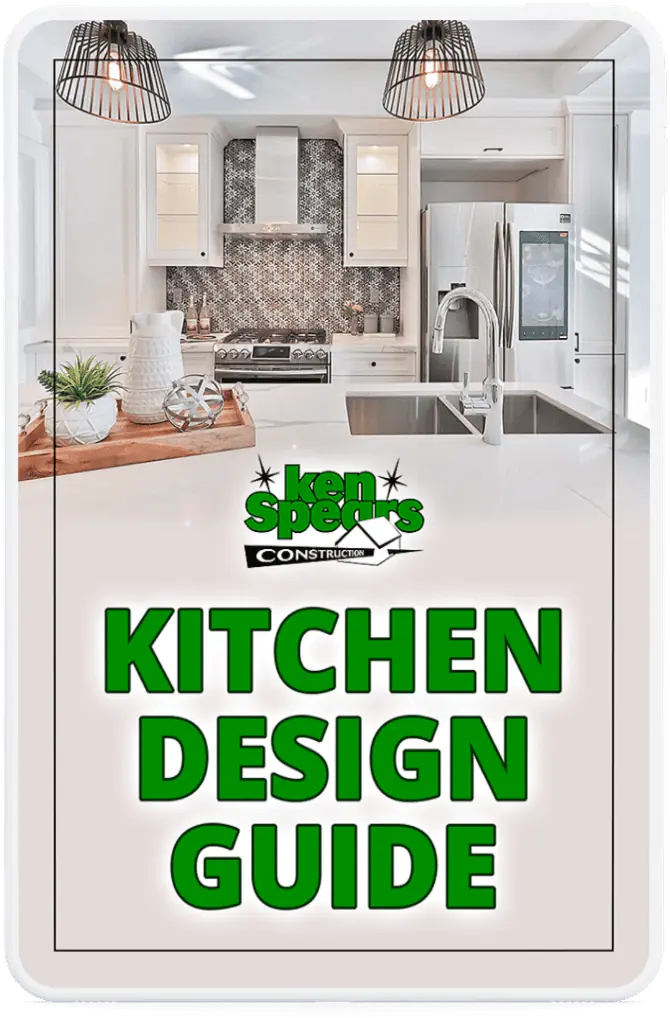Midwest winters are notoriously harsh, with biting winds, heavy snowfall, and plummeting temperatures. Keeping the house warm and energy bills manageable during these months is challenging for homeowners. If you’re considering a remodel, incorporating energy-efficient home improvements isn’t just smart—it’s essential. Here’s how to prepare your home for winter, making it more comfortable and cost-effective.

Why Energy Efficiency Matters
Energy efficiency isn’t just a trendy buzzword—it’s an investment in your home’s long-term performance, comfort, and value. In the Midwest, energy-efficient homes reduce monthly utility bills and improve overall quality of life. Let’s see why energy efficiency is important and how incorporating it into your remodeling project can save you money and increase your home’s value.
Lower Utility Bills, Greater Savings
Heating accounts for nearly 45% of a typical household’s energy use during the winter. You’re likely overpaying for energy if your home is drafty, poorly insulated, or equipped with outdated appliances. Energy-efficient upgrades – such as better insulation, modern HVAC systems, and high-performance windows – work to keep heat inside, reducing the strain on your heating system.
Increased Home Value
Energy-efficient homes are attractive to potential buyers. In fact, homes with eco-friendly upgrades tend to sell faster and at higher prices than their less efficient counterparts. Features like ENERGY STAR-rated appliances, upgraded insulation, and solar panels stand out in the market. Buyers appreciate the prospect of lower utility costs and the added comfort that energy-efficient homes provide. Many states offer rebates and tax incentives for energy-efficient upgrades.
Enhanced Comfort and Health
Energy efficiency goes hand in hand with improved indoor comfort. Drafty rooms, uneven temperatures, and excessive dryness can make winters unbearable. Sealing leaks, upgrading insulation, and investing in modern heating solutions can create a more consistent and cozy indoor environment. This promotes better health by preventing issues like mold growth, dry skin, and respiratory problems associated with inefficient heating and ventilation.
Environmental Impact
Energy-efficient remodeling also reduces your home’s carbon footprint. By consuming less energy, your household contributes to lower greenhouse gas emissions and decreased reliance on non-renewable resources. This is especially important for homeowners looking to adopt a more sustainable lifestyle. While individual upgrades may seem small, collectively, they have a significant positive impact on the environment.
Remodeling as the Perfect Opportunity
Remodeling presents the ideal time to incorporate energy-efficient features. Since the home is already undergoing changes, upgrading insulation, installing energy-efficient windows, and replacing aging appliances is easier and more cost-effective. Rather than tackling these projects individually down the road, integrating them into your remodel saves both time and labor costs.
16 Energy-Efficient Home Improvements for Midwest Winters
Preparing your home for harsh Midwest winters goes beyond quick fixes—it requires thoughtful, long-term solutions. Energy-efficient home improvements are a smart investment that keeps your living space warm and comfortable while lowering energy bills and reducing environmental impact. By integrating these upgrades into your remodeling project, you can create a home that’s both cozy and cost-effective during even the coldest months.
1. Insulated Windows and Doors
Windows and doors are common culprits for heat loss, leading to skyrocketing energy bills. Replacing old, drafty windows with double or triple-pane models with argon gas filling can significantly improve insulation. Look for ENERGY STAR-rated windows to ensure efficiency.
For doors, consider fiberglass or steel options with an insulated core. Add weatherstripping and caulk gaps around frames to create a seal against cold air. These updates keep your home warm and reduce strain on your heating system.
2. Upgrade to High-Efficiency HVAC Systems
Your heating system plays a crucial role during the Midwest’s frosty months. If your HVAC unit is outdated, it might be time for an upgrade. Modern high-efficiency systems, such as those with a high Annual Fuel Utilization Efficiency (AFUE) rating, can save you significant energy costs.
To enhance efficiency, consider zoning systems that allow you to heat only occupied areas of the house. Smart thermostats are another great addition, letting you control the temperature remotely and optimize heating schedules for maximum savings.
3. Insulate Key Areas of Your Home
Proper insulation is a game-changer for maintaining warmth in your home. Key areas to focus on include:
- Attic. Heat rises, and without adequate attic insulation, much of it escapes. Blown-in cellulose or spray foam are excellent choices.
- Walls. Older Midwest homes often have little or no wall insulation. Retrofitting walls with dense-packed cellulose can improve energy retention.
- Basement and Crawl Spaces. Insulate basement walls and crawl space floors to prevent heat loss from below.
4. Seal Air Leaks
Small gaps around doors, windows, vents, and electrical outlets can allow cold air to seep in, even in a well-insulated home. Use caulk, spray foam, or weatherstripping to seal these leaks. Installing door sweeps can further block drafts under doors.
Don’t forget to check your ductwork! Leaky ducts can lose up to 20% of heated air, making your system work harder. Sealing ducts with mastic sealant or metal tape ensures efficient heat distribution.
5. Install Energy-Efficient Lighting

Winter months bring shorter days, and homes rely more heavily on artificial lighting. Switching to energy-efficient LED bulbs can reduce electricity costs without sacrificing brightness. LEDs use up to 75% less energy than traditional incandescent bulbs and last significantly longer.
For added convenience, consider installing dimmer switches or motion-sensor lighting in frequently used spaces.
6. Install Radiant Floor Heating
Walking on cold floors during Midwest winters can be unpleasant. Radiant floor heating is a luxurious yet practical solution that provides even heat distribution throughout a room. This system is highly efficient because it heats the room from the ground up, reducing reliance on forced-air systems.
Pair radiant heating with durable and energy-efficient flooring materials like tile or engineered hardwood for maximum effectiveness.
7. Energy-Efficient Roofing and Siding
Your home’s exterior plays a critical role in protecting against harsh Midwest winters. Metal roofs with reflective coatings or asphalt shingles with proper underlayment can improve energy efficiency by reducing heat loss. Additionally, consider investing in insulated siding. Vinyl siding with foam backing enhances your home’s insulation and provides a polished, modern appearance.
8. Install a Whole-House Humidifier
Winter air is often dry, making your home feel colder than it actually is. A whole-house humidifier can maintain optimal humidity levels, making your home more comfortable and allowing you to set your thermostat slightly lower without sacrificing warmth.
9. Replace Outdated Appliances

Older appliances consume more energy than modern, ENERGY STAR-rated models. Consider upgrading to energy-efficient refrigerators, dishwashers, and washing machines during a remodel. These updates reduce your energy usage and align with a sustainable lifestyle.
10. Embrace Renewable Energy
Explore renewable energy options like solar panels for a more substantial commitment to energy efficiency. While the upfront cost can be significant, federal and state incentives can offset expenses, and the long-term savings make it worthwhile. Midwest winters offer less sunlight than other regions, but with proper planning, solar energy can still be an effective solution.
11. Add Storm Windows or Window Inserts
If replacing all your windows isn’t feasible, storm windows or window inserts are cost-effective alternatives. Depending on your preference, these options add an extra layer of insulation and can be installed seasonally or permanently.
12. Enhance Your Home’s Entryway
An enclosed entryway or vestibule acts as a buffer zone, reducing the amount of cold air that enters your home each time the door is opened. This update also adds charm and functionality, serving as a space to store winter gear.
13. Install Programmable or Smart Thermostats

Programmable thermostats allow you to set specific temperatures for different times of the day, ensuring your heating system isn’t overworked. Smart thermostats go a step further by learning your habits and adjusting settings automatically to maximize energy savings.
14. Optimize Your Fireplace
Fireplaces can add warmth and ambiance to Midwest homes, but traditional designs are often inefficient. Install an energy-efficient insert to retain more heat and prevent drafts. Adding a chimney balloon or damper when the fireplace is not in use will further reduce heat loss.
15. Consider Solar Water Heaters
Heating water accounts for a significant portion of energy bills, especially in winter. Solar water heaters can reduce these costs by harnessing renewable energy. While winters in the Midwest aren’t as sunny, modern systems are designed to work efficiently even in colder climates.
16. Incorporate Energy-Efficient Landscaping
While landscaping may seem like a summer project, it can significantly affect winter energy efficiency. Strategically planted evergreen trees can act as windbreaks, reducing heat loss. Shrubs around the foundation also provide insulation, cutting down on heating costs.
Start Your Energy-Efficiency Remodeling Project
Midwest winters don’t have to be daunting when your home is equipped to handle the chill efficiently. By incorporating these energy-efficient home improvements, you can enjoy a warm, comfortable home while reducing energy costs and your environmental impact.
Ken Spears Construction specializes in creating homes that are as functional as they are beautiful. From insulated windows and radiant flooring to smart thermostats and custom fireplaces, we have the expertise to make your vision a reality.
Explore our blog for more remodeling tips, browse our portfolio and featured projects for inspiration, and schedule your in-home consultation today to get started on energy-efficient solutions tailored to your home. Let’s make your Illinois winters cozy and cost-effective!

